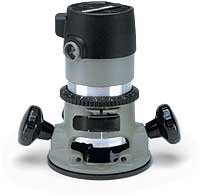
Are there better guidelines for determining router speeds than those provided by the manufacturer in the owner’s manual? (This particular woodworker didn’t think the recommended speeds produced good results.)
Rob Johnstone: With very large router bits, you need to slow down the RPMs for safe cutting. Smaller bits should spin faster (for more information on large bits, check out Woodworker’s Journal, April 2000, page 66). But this is a complex question and without more information, I wonder if the poor results were due to the speed settings per se. Manufacturers’ recommendations are the correct place to start. Then, if experience tells you all is not working well, make your bit speed adjustments. There is a relationship between bit speed, sharpness and feed rate (the speed at which you move the bit through the wood or the stock across the bit) and how well your bit cuts, as well as the characteristics of the individual piece of wood you are working with. So to suggest that a specific speed setting would solve this problem is questionable. The correct answer, as with much of woodworking, is to start with the recommendations and make adjustments if all is not working well.
Ian Kirby: The answer to the question lies in this particular woodworker’s thoughts or experiences. The results of all wood machining are related to cutter speeds, depth of cut, feed rate and hardness of the stock. And all of these assume that the setup of fences, guide blocks and holddowns are correctly in place. Good results come from the totality; picking out one link in this chain doesn’t make a strong chain. Put the parts together as you think appropriate and then begin the task of methodically improving the processes if improvement is needed. That’s the most important guideline.







